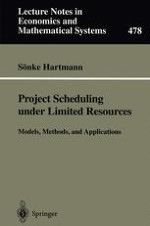1999 | Book
Project Scheduling under Limited Resources
Models, Methods, and Applications
Author: Dr. Sönke Hartmann
Publisher: Springer Berlin Heidelberg
Book Series : Lecture Notes in Economics and Mathematical Systems
Included in: Professional Book Archive
